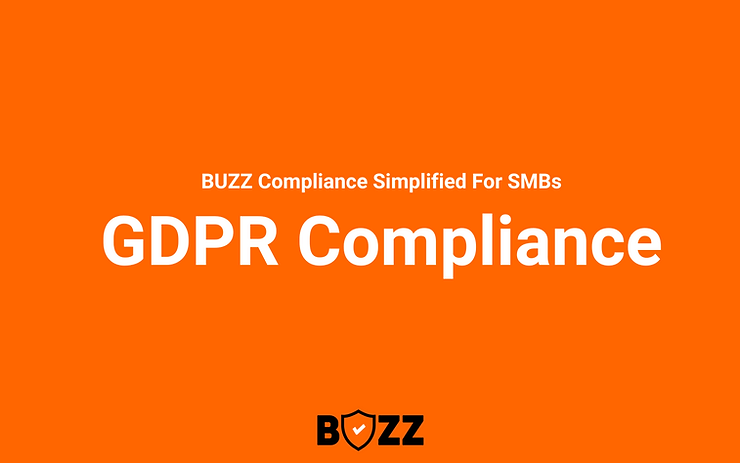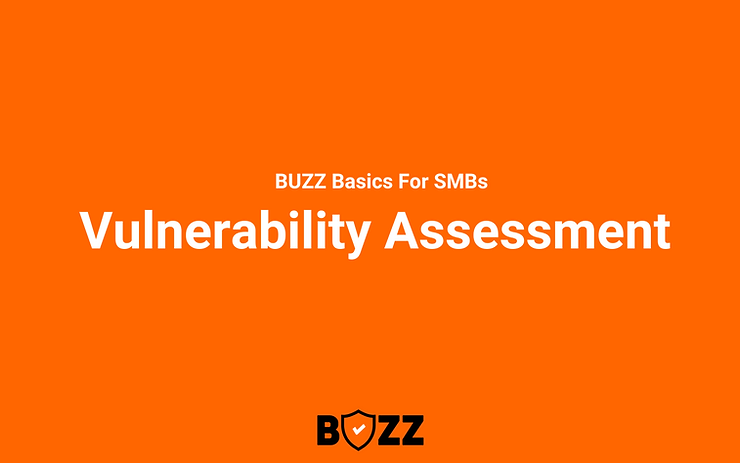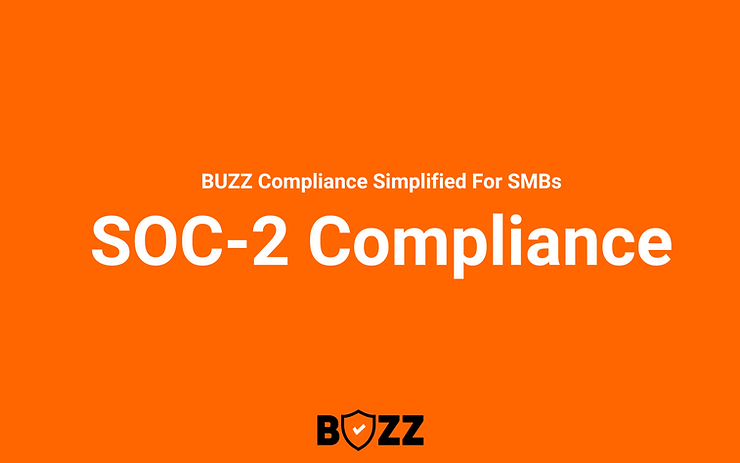Demystifying GDPR for Small & Medium Businesses
In an era where data breaches and privacy concerns are escalating, the General Data Protection Regulation (GDPR) stands as a pivotal regulation in the realm of data protection and privacy. Originating in the European Union, GDPR has set a global benchmark for data privacy laws, significantly impacting businesses of all sizes, including small and medium-sized businesses (SMBs).
For SMBs, the journey towards GDPR compliance may seem daunting due to limited resources and expertise compared to larger corporations. However, the importance of GDPR compliance builds trust with customers, enhances data security, and fosters a culture of privacy within the organization.
This blog aims to demystify GDPR for SMBs, breaking down the complexities into manageable segments with practical, actionable guidance that balances simplicity with the depth of information. By the end of this guide, SMBs will have a clearer understanding of GDPR requirements and how to integrate them into their business practices effectively and efficiently.
What Can You Expect
Key GDPR Terminology Simplified for SMBs
Decoding GDPR – A Detailed Look at Each Criterion
Integrating GDPR Criteria into SMB Engineering Practices
Practical Steps for SMBs to Achieve GDPR Compliance
When and How to Begin Your GDPR Compliance Journey
Key GDPR Terminology Simplified for SMBs
Before diving into the specific criteria of GDPR, it’s crucial for SMBs to familiarize themselves with the core terms used throughout the regulation. Understanding these terms is the first step in comprehending the requirements and implications of GDPR.
1. Data Subject
A data subject is any individual whose personal data is being collected, held, or processed. In an SMB context, this could be customers, employees, or any other individuals the business interacts with.
2. Personal Data
Personal data refers to any information that can be used to directly or indirectly identify a person. This includes names, email addresses, location data, IP addresses, and more. For SMBs, this is the data they collect from their customers or employees.
3. Data Processing
Data processing encompasses any operation performed on personal data, whether automated or manual. This includes collecting, recording, organizing, structuring, storing, adapting, retrieving, consulting, using, disclosing, disseminating, aligning, combining, restricting, erasing, or destroying data.
4. Data Controller
A data controller is an entity (individual, organization, or authority) that determines the purposes and means of processing personal data. In the case of an SMB, it is typically the business itself making decisions about how to handle customer or employee data.
5. Data Processor
A data processor is a third party that processes personal data on behalf of the data controller. This could include cloud service providers, payroll companies, or CRM systems used by SMBs.
6. Data Protection Officer (DPO)
A DPO is a person with expert knowledge of data protection law and practices, who assists the data controller or processor in monitoring internal compliance with GDPR. While not all SMBs are required to appoint a DPO, it’s important to understand the role, especially if the business processes large amounts of sensitive data.
7. Consent
Consent is a freely given, specific, informed, and unambiguous indication of the data subject’s wishes. It involves a clear affirmative action signifying agreement to the processing of personal data. For SMBs, obtaining clear consent is crucial for many types of data processing activities.
8. Data Breach
A data breach is a security incident in which personal data is accessed, disclosed, altered, lost, or destroyed without authorization. Understanding and preparing for potential data breaches is essential for GDPR compliance.
Grasping these terms is fundamental for SMBs to navigate the GDPR landscape. It helps in understanding the regulation’s requirements and how they apply to the specific contexts of their businesses. This knowledge forms the foundation for implementing GDPR-compliant practices and policies.
Decoding GDPR – A Detailed Look at Each Criterion
SMBs must understand these principles thoroughly and apply them in their data processing activities. This may involve revising data handling practices, updating privacy policies, and investing in data security measures.
1. Lawfulness, Fairness, and Transparency
- Lawfulness: Data processing must have a legal basis, such as consent, contract, legal obligation, vital interests, public task, or legitimate interests.
- Fairness: Processing should be fair to the data subject. This means considering how data processing affects the individuals and ensuring it does not have unjustified adverse effects on them.
- Transparency: Organizations must be transparent about how they use personal data. This involves clear communication with data subjects about data processing activities.
2. Purpose Limitation
- Data should be collected for specified, explicit, and legitimate purposes and not further processed in a manner incompatible with those purposes. This criterion ensures that data is used only for the reasons it was initially collected for.
3. Data Minimization
- Organizations should only process the personal data that is necessary for achieving the purposes for which it is processed. This means limiting the data to what is absolutely necessary.
4. Accuracy
- Personal data must be accurate and, where necessary, kept up to date. Inaccurate data should be corrected or deleted. This criterion emphasizes the importance of data accuracy in decision-making and personal rights.
5. Storage Limitation
- Personal data should be kept in a form that permits identification of data subjects for no longer than necessary. This involves implementing data retention policies and ensuring data is not kept indefinitely without a valid reason.
6. Integrity and Confidentiality (Security)
- Data must be processed securely by using appropriate technical or organizational measures. This includes protecting data against unauthorized or unlawful processing, accidental loss, destruction, or damage.
7. Accountability
- The data controller is responsible for, and must be able to demonstrate, compliance with the other GDPR principles. This involves documenting data processing activities, implementing GDPR-compliant practices, and regularly reviewing these practices.
Integrating GDPR Criteria into SMB Engineering Practices
Understanding GDPR criteria is one thing, but translating them into actionable engineering practices is where many SMBs face challenges. This section aims to bridge that gap, offering practical guidance on how each GDPR criterion can be implemented in the day-to-day operations of an SMB.
1. Lawfulness, Fairness, and Transparency
Implement clear data collection forms, ensuring that consent is explicitly obtained. Use plain language in privacy policies and data collection notices. Ensure that the IT systems only process data for which there is a legal basis.
2. Purpose Limitation
Design systems to segregate and track data based on its intended purpose. Implement access controls and data architecture that prevent the use of data for unintended purposes.
3. Data Minimization
Develop data input forms that only ask for necessary information. Regularly audit databases and systems to ensure that only essential data is stored. Implement data pruning processes in your IT systems.
4. Accuracy
Create functionalities for data subjects to update their information easily. Implement regular data verification and cleaning processes to maintain data accuracy.
5. Storage Limitation
Establish data retention policies and automate the deletion or anonymization of data that is no longer necessary. Use database management systems that support automatic data lifecycle management.
6. Integrity and Confidentiality (Security)
Invest in robust cybersecurity measures like encryption, firewalls, and intrusion detection systems. Regularly update and patch systems. Conduct security audits and vulnerability assessments.
7. Accountability
Maintain detailed logs of data processing activities. Use project management tools to document compliance efforts. Implement regular GDPR training for the engineering team.
By aligning GDPR criteria with engineering practices, SMBs can ensure that they are not only compliant but also building a more secure and trustworthy environment for their customers and employees.
Practical Steps for SMBs to Achieve GDPR Compliance
Achieving GDPR compliance can be a significant milestone for any SMB. Here’s a practical approach to getting started on the path to GDPR certification:
1. Understand GDPR Requirements
Invest time in understanding the GDPR and its implications for your business. This may involve consulting with a legal expert or using online resources specifically designed for GDPR education.
2. Conduct a Data Audit
Perform a thorough audit of all the personal data you collect, process, and store. Identify what data you have, where it comes from, how it’s processed, and who has access to it.
3. Map Data Flows
Create a data flow diagram. This helps in understanding how data moves through your organization and where it might be at risk.
4. Review and Update Data Policies
Ensure that your data protection policies are up to date and in line with GDPR requirements. This includes privacy policies, data protection policies, and data breach response plans.
5. Implement Necessary Changes
Based on your data audit and policy review, make the necessary changes to your data processing activities. This could involve changing how you collect consent, updating data storage practices, or enhancing data security measures.
6. Train Your Team
Conduct training sessions for your employees. Everyone in your organization should understand the basics of GDPR and how it affects their day-to-day work.
7. Appoint a Data Protection Officer (DPO)
If your business requires it (based on the volume or nature of data processing activities), appoint a DPO who will oversee GDPR compliance.
8. Document Everything
Keep detailed records of all the steps you take towards GDPR compliance. Documentation is key in demonstrating your efforts to comply with GDPR.
9. Regularly Review and Update Your Practices
GDPR compliance is not a one-time task. Regularly review and update your data protection practices to ensure ongoing compliance.
10. Consider Certification:
While GDPR certification is not mandatory, obtaining it can be beneficial. Look into GDPR certification schemes that are recognized by the relevant data protection authorities.
By taking these practical steps, SMBs can not only comply with GDPR but also strengthen their reputation and build stronger relationships with customers who value privacy and data security.
When and How to Begin Your GDPR Compliance Journey
For small and medium-sized businesses, determining the right time to start focusing on GDPR compliance, understanding the associated costs, and knowing who can manage the process are critical factors. This section provides insights into these aspects to help SMBs plan effectively.
1. When to Start Thinking About GDPR
- As Soon as Possible: Ideally, GDPR compliance should be considered at the earliest stages of your business, especially if you handle the personal data of EU citizens. If you’re already operational, it’s crucial to start as soon as possible.
- During Business Changes: Any significant change in your business, such as entering new markets, introducing new data processing activities, or scaling operations, should trigger a review of GDPR compliance.
2. What to Look For
- Scope of Data Processing: Assess the types of personal data you handle, the volume, and the processing activities. This will help determine the complexity of your GDPR compliance needs.
- Risks and Impacts: Consider the potential risks associated with your data processing activities, including the impact of a data breach or non-compliance.
3. Timing for Compliance
- Initial Assessment: Conducting an initial GDPR assessment can take a few weeks to a few months, depending on the size and complexity of your operations.
- Implementation: The time frame for implementing necessary changes varies greatly. It could range from a few months to over a year, especially if significant overhauls are required.
4. Cost Considerations
- Consultancy Fees: If you hire external consultants or legal experts, costs can vary based on their expertise and your specific needs.
- Technology and Training: Investing in secure data processing technology and employee training are ongoing costs that need to be factored in.
- Maintenance: Ongoing compliance monitoring and updates also incur costs, which should be part of your regular budget planning.
5. Who Can Manage GDPR Compliance
- Internal Resources: Smaller SMBs might manage compliance using internal resources, such as a designated Data Protection Officer or a compliance team.
- External Experts: For more complex situations, or if you lack in-house expertise, it may be wise to engage external GDPR experts or legal counsel.
Summing Up the GDPR Journey for Small and Medium Businesses
As we conclude this comprehensive guide on GDPR for SMBs, it’s important to reflect on the key takeaways and the broader implications of GDPR compliance for small and medium-sized businesses.
1. GDPR as an Opportunity, Not Just a Requirement
While GDPR compliance is a legal necessity, it should also be viewed as an opportunity to strengthen your business. By adhering to GDPR, SMBs can enhance their data handling practices, build trust with customers, and differentiate themselves in a marketplace that increasingly values privacy and security.
2. The Journey is Continuous
GDPR compliance is not a one-time achievement but an ongoing process. The digital landscape and data protection regulations are constantly evolving, and so should your practices. Regular reviews and updates are essential to stay compliant and protect your business and customers.
3. Empowerment Through Knowledge and Action
Understanding GDPR and taking concrete steps to comply empowers SMBs to handle data responsibly and ethically. This journey involves everyone in the organization, from top management to the newest employees, underlining the importance of a culture that values data privacy.
4. Investment in Compliance is an Investment in the Future:
The time, effort, and resources you invest in GDPR compliance are investments in the future of your business. By establishing robust data protection practices, you are laying the foundation for sustainable growth and customer loyalty.
5. Seeking Help When Needed
Finally, remember that seeking help, whether through hiring experts or using technological solutions, is a smart strategy. No SMB needs to navigate the complexities of GDPR alone. Utilizing available resources and expertise can make the compliance journey more manageable and effective.
For SMBs, GDPR compliance is a significant but manageable challenge. It’s an essential step in the journey towards becoming a more responsible, trusted, and competitive business in the digital age. By embracing GDPR, SMBs can not only comply with regulations but also foster a culture of privacy, security, and customer-centricity.
Talk to us at BUZZ for personalized guidance to navigate the complexities of GDPR Compliance.
Our team of experts is here to assist you, ensuring that your business remains resilient in the face of evolving cyber threats.
Contact BUZZ: [email protected] | LinkedIn
Your security is our priority. Let’s build a safer digital future together.
Frequently Asked Questions (FAQs) on GDPR for SMBs
This section aims to answer some of the most frequently asked questions about GDPR, providing SMBs with clear, concise information to help them navigate their compliance journey.
Yes, if your business processes the personal data of individuals in the EU, GDPR compliance is mandatory regardless of your business size. This includes SMBs that may be based outside the EU but offer goods or services to EU citizens.
Non-compliance can result in significant fines, up to €20 million or 4% of the company’s annual global turnover, whichever is higher. There are also reputational risks and the potential for legal action from individuals affected by non-compliance.
A DPO is required if your business’s core activities involve large scale, regular, and systematic monitoring of individuals or large scale processing of special categories of data. If you’re unsure, it’s advisable to consult with a GDPR expert.
You can use existing customer data if it was collected in a manner compliant with GDPR, including having proper consent where required. It’s important to review how the data was collected and ensure it meets GDPR standards.
GDPR requires businesses to report certain types of data breaches to the relevant supervisory authority within 72 hours of becoming aware of the breach. If the breach poses a high risk to individuals’ rights and freedoms, you must also inform those individuals without undue delay.
Employees should receive training on GDPR basics, including the importance of data protection, their specific roles in ensuring compliance, and how to identify and report a data breach. Regular updates and refresher courses are also recommended.
Regular reviews are essential. It’s advisable to conduct an annual review at a minimum, or more frequently if there are significant changes in your data processing activities or in GDPR regulations.




